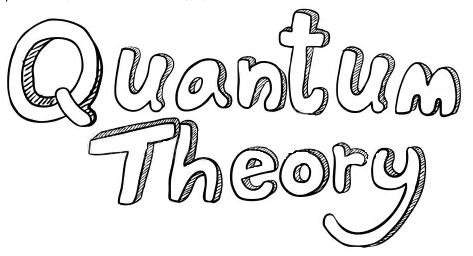Introduction to Quantum Mechanics
Quantum mechanics is a fundamental branch of physics that provides a framework for understanding the behavior of matter and energy on the atomic and subatomic scales. It emerged in the early 20th century as scientists grappled with phenomena that couldn't be explained by classical physics, such as the emission of light by hot objects (blackbody radiation) and the stability of atoms.

Historical Background
Quantum mechanics emerged in the early 20th century, challenging classical physics' understanding of the universe. Some key milestones include:
- Max Planck (1900): Introduced the idea of quantized energy levels, laying the groundwork for quantum theory.
- Albert Einstein (1905): Explained the photoelectric effect, demonstrating the particle nature of light.
- Niels Bohr (1913): Developed the Bohr model of the atom, linking quantized energy levels to atomic stability.
Werner Heisenberg, Erwin Schrödinger, and Paul Dirac (1920s): Developed the mathematical framework of quantum mechanics.
Unlike classical physics, which describes the world in terms of definite positions, velocities, and trajectories, quantum mechanics introduces the concept of probability and uncertainty. It describes particles not as solid objects with well-defined properties, but as wave-like entities that can exist in multiple states simultaneously. This "superposition" of states leads to counterintuitive phenomena like quantum tunneling, where particles can seemingly pass through barriers that they classically shouldn't be able to overcome.
Wave-Particle Duality
One of the cornerstones of quantum mechanics is the wave-particle duality, which states that particles can exhibit both wave-like and particle-like properties. This duality is demonstrated in experiments like the double-slit experiment, where particles, such as electrons, can interfere with themselves like waves, creating an interference pattern on a detector screen. This wave-like behavior has profound implications for our understanding of the microscopic world.
Quantum States and Superposition
Quantum mechanics states that particles exist in a superposition of states – they can be in multiple states at once until measured:
Quantum Superposition
A fundamental principle where particles can occupy all possible states simultaneously. Measurement collapses the superposition into one state.
Applications
This principle is at the heart of technologies like quantum computing, where qubits can represent multiple states simultaneously.
Heisenberg's Uncertainty Principle
Heisenberg's Uncertainty Principle is a cornerstone of quantum mechanics:
Principle: It is impossible to know both the exact position and momentum of a particle simultaneously. This inherent uncertainty is what makes quantum mechanics probabilistic rather than deterministic.Quantum Entanglement
Quantum entanglement is a phenomenon where particles become interconnected and the state of one instantly affects the other, regardless of the distance between them:
- Entanglement: When two particles are entangled, any change in the state of one will immediately be reflected in the state of the other, even if they are light-years apart.
- Einstein's Criticism: Described entanglement as "spooky action at a distance," although it has been experimentally verified.
Schrodinger's Wave Equation
The Schrodinger equation is fundamental in quantum mechanics, describing how the quantum state of a system evolves over time:
- Wave Function: A mathematical function that describes the probability amplitude of a particle's state.
- Probability Interpretation: The square of the wave function gives the probability density of finding a particle in a particular state.
Quantum Measurement and the Observer Effect
Measurement in quantum mechanics plays a crucial role in determining the state of a particle:
- Wave Function Collapse: Upon measurement, a particle's wave function collapses from a superposition of states to a single state.
- Observer Effect: The act of measuring a quantum system influences its state, making quantum mechanics fundamentally different from classical mechanics.
Quantum Tunneling
Quantum tunneling is a phenomenon where particles can pass through energy barriers that, according to classical physics, would be insurmountable:
Tunneling Effect: Particles have a probability of "tunneling" through barriers, which is critical in processes like nuclear fusion in stars and the operation of electronic components like tunnel diodes.Applications of Quantum Mechanics
The principles of quantum mechanics have led to numerous technological advancements:
- Semiconductors: Foundation of modern electronics, including computers and smartphones.
- Lasers: Employed in various applications from medical surgeries to precision cutting.
- Quantum Computing: Represents a new paradigm of computation with potentially revolutionary capabilities.
Conclusion
Quantum mechanics has revolutionized our understanding of the universe and has led to numerous technological advancements. It forms the basis for many modern technologies, including lasers, transistors, and nuclear power. It continues to be an active area of research, with ongoing investigations into quantum computing, quantum cryptography, and other cutting-edge fields.
Disclaimer: This is a simplified introduction. Quantum mechanics is a complex subject with many nuances and mathematical intricacies.